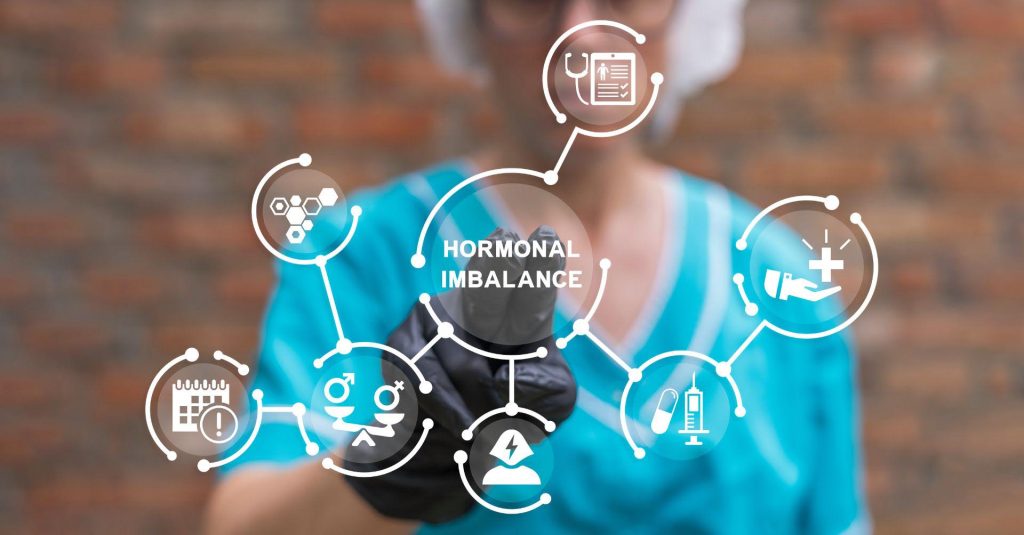Running has long been celebrated as a powerful means of improving both physical and mental health. For women, however, running comes with unique considerations that influence their training and performance. Chief among these are the hormonal fluctuations that occur throughout the menstrual cycle, perimenopause, and menopause.
These hormonal shifts can affect everything from energy levels to muscle recovery and even injury risk. Understanding how hormones influence performance is crucial for female runners, whether they are beginners or elite athletes.
The Menstrual Cycle and Running Performance
The menstrual cycle is divided into two main phases: the follicular phase and the luteal phase. These phases, along with menstruation, bring significant changes in hormone levels, particularly estrogen and progesterone. These fluctuations directly impact how a woman feels and performs while running.
Follicular Phase
The follicular phase begins on the first day of menstruation and lasts until ovulation, roughly the first two weeks of the cycle. During this phase, estrogen levels gradually rise, while progesterone remains low. This hormonal environment tends to support increased energy and muscle strength, making it an optimal time for high-intensity training or pushing through more challenging runs. Some studies suggest that women experience greater endurance and faster recovery in this phase due to the elevated levels of estrogen, which promotes glycogen storage and muscle repair.
Ovulation
Ovulation occurs around the midpoint of the cycle and is marked by a peak in estrogen levels. Some female runners report feeling their strongest during this brief window. However, it is also a time when the risk of injury may increase, particularly for soft tissues like ligaments, as estrogen can reduce their stability. Being aware of this risk is important for women aiming to optimize performance without compromising long-term health.
Luteal Phase
The luteal phase begins after ovulation and lasts until menstruation. Progesterone rises significantly during this phase, while estrogen declines. This hormonal shift can cause increased fatigue, slower recovery times, and higher perceived effort during workouts. Some women also experience premenstrual symptoms, such as bloating or mood swings, which can interfere with training. It is common for women to feel less motivated to push through hard workouts during this phase, and this is when training might need to be adapted. Lower-intensity exercises like recovery runs or cross-training can be more suitable options.
Perimenopause and Menopause: Long-Term Hormonal Changes
As women age, hormonal shifts become even more pronounced. Perimenopause, the transitional phase leading to menopause, typically begins in a woman’s 40s and can last several years. During this time, estrogen and progesterone levels become irregular, causing fluctuations that can make training feel unpredictable.
Perimenopause
In perimenopause, women often experience night sweats, sleep disturbances, and mood swings, all of which can interfere with their running routines. Decreased estrogen can also lead to the loss of bone density and muscle mass, making strength training a necessary complement to running to maintain muscle integrity. Cardiovascular health may also be affected as estrogen plays a protective role for the heart, so women may notice changes in endurance and stamina.
Menopause
Menopause is defined as the cessation of menstrual periods for 12 consecutive months. During menopause, estrogen and progesterone levels plummet, which can further affect muscle strength, recovery, and bone health. Weight gain around the abdomen, decreased metabolic rate, and joint pain are also common issues that can hinder running performance. Runners may need to adjust their goals and training plans to account for these changes.
Hormonal Birth Control and Performance
Hormonal contraceptives, such as birth control pills, injections, or IUDs, can have a significant impact on running performance as they alter the body’s natural hormonal fluctuations. Some women may find that hormonal birth control regulates their cycle and reduces symptoms like heavy bleeding or cramps, allowing for more consistent training. However, others may experience side effects like weight gain, mood changes, or decreased energy, which could affect their ability to run efficiently.
Oral contraceptives, in particular, suppress natural estrogen and progesterone levels, which may blunt some of the performance-enhancing effects of the follicular phase. While many athletes perform well on birth control, it is important to monitor any changes in stamina, recovery, or mood and adjust training accordingly.

The Role of Nutrition in Supporting Hormonal Balance
Nutrition plays a key role in managing the effects of hormonal changes on running performance. During the follicular phase, women may benefit from a higher intake of complex carbohydrates to support glycogen storage, which is naturally enhanced by higher estrogen levels. In the luteal phase, when cravings for sweets and carbohydrates may increase, it is important to maintain a balanced diet rich in healthy fats, proteins, and fibre to regulate blood sugar levels and reduce inflammation.
For women going through perimenopause and menopause, increased calcium and vitamin D intake is essential for maintaining bone density. Protein intake should also be increased to counteract muscle loss associated with declining estrogen levels. Omega-3 fatty acids and antioxidants are particularly important for reducing inflammation and promoting cardiovascular health, which can become compromised during menopause.
Hormone Replacement Therapy and Running Performance
Hormone Replacement Therapy (HRT) can be an option for women experiencing severe symptoms of menopause that interfere with their ability to train and compete. HRT involves taking synthetic or bioidentical hormones to replace the estrogen and progesterone the body no longer produces. Some women find that HRT helps restore energy levels, improve muscle mass, and reduce joint pain, making it easier to maintain an active lifestyle, including running.HRT is available through various medical avenues, and in recent years, it has become easier to access, with treatments now often prescribed through online telemedicine. However, it is important to consider the potential risks, such as increased risk of blood clots, heart disease, or breast cancer, before starting any hormone therapy. Consulting with a healthcare provider is essential for determining if HRT is a suitable option for maintaining running performance.
How to Adapt Your Training to Hormonal Changes
One of the most important things women can do is listen to their bodies. Hormonal shifts affect each woman differently, and no two menstrual cycles, perimenopausal experiences, or menopausal transitions are exactly the same. Adapting training based on how your body feels rather than rigidly following a schedule can lead to better performance in the long term.
Tracking your cycle with a fitness app can help you understand patterns in energy, strength, and endurance. Incorporating a mix of high-intensity and low-intensity workouts across your cycle, along with adequate rest, can help balance training loads. Strength training and mobility work should be prioritized during phases of low estrogen to help prevent injuries.
Empowering Yourself Through Knowledge
Hormonal changes are a natural part of life, but they don’t have to limit your running performance. By understanding how your body responds to these shifts and making informed adjustments to your training, you can continue to improve your fitness and enjoy the many benefits of running. Staying informed, whether through speaking with healthcare professionals or exploring research, allows female runners to manage these changes effectively.


